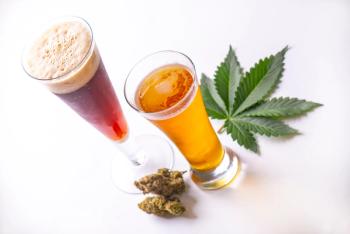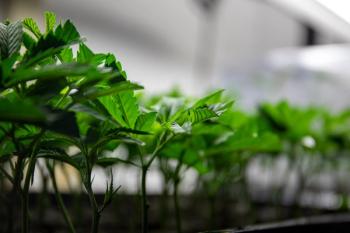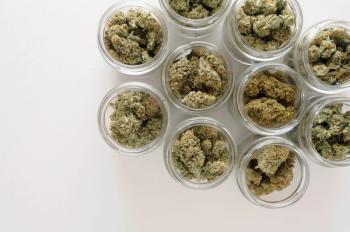Cannabis Science and Technology
- January/February 2020
- Volume 3
- Issue 1
Vapes: What Are You Actually Inhaling?
A review of a study on vapes found four major factors related to the production of vape cartridges that warrant additional attention: cutting agents, temperature, flavoring, and hardware and heavy metals.
Based on our experience testing compliance samples, engaging with local and state officials on regulations, and working directly with manufacturers and clients, we have identified four major factors related to the production of vape cartridges that warrant additional attention: cutting agents, temperature, flavoring, and hardware and heavy metals.
On October 5, 2019, CannaSafe released our initial findings into the sudden appearance of multiple e-cigarette, or vaping, product use associated lung injury (EVALI) (1) cases across the country. That report highlighted and focused on the alarmingly high levels of pesticides and cutting agents, particularly vitamin E acetate, found in cartridges purchased on the illicit market. California has the strictest cannabis product testing regulations in the nation, and the licensed products proved to be free of contaminants and dangerous pesticides. There are many factors that go into the efficacy of a vape cartridge, which prompted us to continue this study on potential factors at play beyond the scope of current cannabis testing and regulation. Similar to ongoing investigations undertaken by the Centers for Disease Control and Prevention (CDC) (2), CannaSafe has tested the vaporized contents of vape cartridges and monitored the performance of the accompanying hardware in an effort to shed light on some of the unknowns related to what actually enters a consumer’s lungs. This testing was examined alongside the regulatory testing required under California Proposition 64 (3) (commonly called Prop 64, approved at the ballot in 2016, and in effect since January 1, 2018), which tests the final packaged units of product as sold or purchased in licensed cannabis dispensaries. The goal of this study is to bring information to the table about the state of vape products as they are inhaled.
Our doing business as (DBA) name is CannaSafe, but the original name of our company was Consumer Safety Analytics. Our overall mission has always been to provide data and information so that consumers can make informed and health-conscious decisions. We have examined samples from both the legal and illicit cannabis markets to provide insight into what measures could be taken to ensure the safest products are available to consumers.
This study was conducted using CannaSafe’s own resources. All of the legal cartridges were purchased at licensed dispensaries. All illicit cartridges were purchased from unlicensed delivery services or retailers in Los Angeles, California. Due to the limited data set, no broad conclusions should be inferred from the results presented. Rather, the results should highlight the need for additional testing of vape cartridge hardware and oil, especially at high temperatures.
Overview
Based on our experience testing compliance samples, engaging with local and state officials on regulations, and working directly with manufacturers and clients, we have identified four major factors related to the production of vape cartridges that warrant additional attention:
- Cutting agents
- Temperature
- Flavoring
- Hardware and heavy metals
Each of these factors play an important role in how products are consumed. Let's take a closer look at each one.
Cutting Agents
For the purpose of this study, cutting agents refer to chemicals added to vape cartridges that dilute the cannabis oil inside. The primary reason cutting agents are used is to increase the final volume available for sale by the producer of the vape cartridge. For the consumer, this results in a given purchased amount (whether measured by weight or volume) containing less cannabis oil than expected.
With advanced e-cigarette technology being applied to cannabis, it has become essentially impossible for the average consumer to tell whether the oil in their cartridge has been “cut” with off-label chemicals. Cutting agents on the whole are meant to stay under the consumer’s radar and don’t materially change the appearance, flavor, or effect of the product when added. Laboratory testing is needed to properly categorize the content of vape cartridges.
Cutting agents are currently unregulated in California. Colorado implemented a ban on polyethylene glycol (PEG), vitamin E acetate, and medium-chain triglycerides (MCT oil) as additives to vape cartridges that went into effect at the start of 2020 (4). While banning the aforementioned additives will certainly help address the current issue, enforcing labeling requirements would also promote transparency and protect consumers against the next unsafe cutting agent discovered.
Our study presented the following on illicit cartridges: Illicit cartridge A contained 30.88% vitamin E acetate. Illicit cartridge B and illicit cartridge C contained 36.74% and 31.13% vitamin E acetate, respectively. Illicit cartridge D had 34.02% vitamin E acetate. Illicit cartridge E had 34.69% vitamin E acetate (see Figure 1).
Temperature
The role cutting agents play in the dilution of cannabis oil and the deception to the consumer is harmful enough. Yet, even more sinister is what the chemicals added to vape cartridges turn into upon heating. A study (5) of four different cutting agents (propylene glycol [PG], vegetable glycerin [VG], polyethylene glycol 400 [PEG 400], and MCT) found that all four produced measurable amounts of acetaldehyde, acrolein, and formaldehyde when heated to 230 °C (446 °F). Thus, the uncertainty around the content of a vape cartridge is only increased when the unknown material is heated to produce the vapor inhaled by the user.
A quick internet search produces a great deal of information and recommendations about the best temperature for vaping cannabis (6–10). But there’s a disconnect for many consumers who find themselves reliant on vape pens and batteries that express levels of heating intensity not in degrees Celsius (°C) or Fahrenheit (°F), but in units of electric potential (volts) and resistance (ohms). Ohm’s Law (11) dictates the relationship (V = IR) between voltage (V), current (I), and resistance (R) but does not help in directly calculating the resulting temperature from a given voltage or resistance (in fact, Ohm’s Law assumes constant temperature). This is a problem common with all cannabis vape products and not just cartridges and pens purchased illicitly. Across all 14 cartridges used in this study, no cartridge listed the recommended temperature of vaporization. We have seen legal manufactures have physical or visual indicators to control temperature, but consumers don’t always use the battery intended by the manufacturer nor understand how important it is to do so. Only one legal cartridge (Legal Cart A) provided recommended settings of any kind, listing a “recommended voltage” of 3.5 V on the packaging. Based on our review of various sources, this seems to match general industry-wide recommendations of ~3 V.
The key to connecting voltage and resistance to temperature is that the current through the heating coil of a vape pen acts as a proxy for temperature. By Ohm’s Law, at constant resistance, more voltage means more current. More current means more electron activity in the heating coil, causing it to heat more and reach a higher temperature. If a vape pen only has a single voltage option, more volts can be assumed to produce more current and a higher temperature. In practice, it is not possible for the average consumer to get a reliable estimate of the temperature at which their vape pen is operating given the standard specifications of commodity hardware.
Consumers who are able to spend more money on their vape hardware can benefit from engineered solutions that allow for direct control over temperature (12). For those who are unable to afford a temperature controlled vape device, a better unit of measurement than voltage or resistance alone is power (expressed in “W” for watts). Power in watts is the product of the voltage (V) multiplied by the current (in “A” amps). Unlike ratings of voltage or resistance alone, power incorporates a measurement related to time (because current expresses a measurement of electrons flowing per second) that allows for, at least in theory, a representation of the amount of energy being delivered to the vape cartridge per second.
In conclusion, there needs to be more transparency into the hardware’s vaporizing temperature. For this study, we compared voltage settings of 3.5 V versus 5.8 V. We found that even the oil in legal cartridges broke down into unfavorable chemicals when vaporized at higher voltage settings.
Using Gastec gas detector tubes to measure vapors at the higher voltage setting, formaldehyde, carbon monoxide, and hydrogen cyanide were found in the illicit Cartridge A (>50 ppm), illicit cartridge D (>50 ppm), and illicit cartridge F (5 ppm) cartridges. Harmful and potentially harmful constituents (HPHCs) were found at inconclusive levels in both illicit and legal carts (13). This may be due to inconsistent temperature from the battery heating the cartridge oil and the instability of the compounds generated in the vapor.
Flavoring
Cannabis naturally produces flavoring compounds with the most predominant being terpenes. Terpenes represent a wide variety of organic compounds that are produced by many plants. Their commonality between plants is reflected in their nomenclature: pinene, for example, is present in “pine” resin (along with other plants both coniferous and otherwise). The concentration and types of terpenes varies greatly between cannabis varieties.
To make it into vape cartridges, cannabis terpenes can be extracted from the plant, concentrated, and added to the tetrahydrocannabinol (THC) or cannabidiol (CBD) oil in the amount desired by the manufacturer. There are many different extraction methods, with the most common being butane extraction and supercritical CO2 extraction (14). In these two cases, an organic solvent is used to “strip” the terpenes from cannabis and the terpenes are then purified to create a solvent-free concentrated form that can be added to cannabis products.
While naturally present in cannabis flower, terpenes can also be synthesized in a laboratory. Synthesis of terpenes can be accomplished using methods standard to organic and analytical chemistry and synthetic terpenes are a common additive to processed foods (15).
The addition of concentrated terpenes and other flavoring to cannabis vape cartridges is important to consider for two main reasons. First, as with cigarettes and e-cigarettes (16), flavoring in cannabis cartridges can be used to entice consumers, particularly underage users, prone to addiction. Second, as with cutting agents, the chemicals used for flavoring create an unknown element in the resulting vapor because of the heat applied by the vape pen. The resulting aerosols produced by flavoring products have been shown to have widespread effects on various molecular pathways related to lung function (17,18). In the context of illicit vape cartridges, added flavoring is cause for concern because of the sporadic by-products involved with the resulting aerosols present in the consumed vapor as well as the possibility that the flavoring can be used to camouflage the presence of cutting agents and other additives. One can assume that the large amount of unknown compounds found in the illicit carts are additives, which warrant further investigation to identify and quantify.
Among the analytes tested for in this study, flavoring compounds proved the hardest to find and measure. Current regulations do not specify requirements related to flavoring, so standard methods applied to cannabis are not readily available. This is why we determined the unknowns in the illicit carts we tested, that is, the illicit CBD oil cartridge, to be flavorings. While the product’s label claimed a concentration of 10% CBD, testing showed just 0.42%. It also tested at 0% for terpenes, 0% for vitamin E acetate, had no pesticides, and contained no other cannabinoids other than CBD. The only thing outside of CBD that even registered from the standard testing panel run for the sample (replicated to match standard Bureau of Cannabis Control [BCC] compliance guidelines) was a trace amount of ethanol and a level of lead (8.640 µg/g) 17-times greater than the allowed amount.
We can organoleptically assume that vanillin is the primary flavor additive in the illicit CBD cartridge (that is, the cartridge smelled like vanilla). This was supported in the vapor analysis, where this cartridge was the only one that had a positive hit for a flavoring agent (vanillin). Based on our scan data from the sample, vanillin had one of the highest peaks, meaning that the flavoring is a major component of the vape (Figure 2).
Hardware and Heavy Metals
The hardware used to vaporize the cannabis oil inside the cartridges is currently unregulated under Prop 64. The content of the cartridges and how its various metal components align with trace amounts found in the oil tested from the cartridges are both in need of further study. Since batteries with their own potentially hazardous materials are incorporated into every vape pen and similar device, the connections between batteries and cartridges must also be considered on a case-by-case basis to identify possible sources of contamination in the final product, both as oil and vapor.
The closest thing to an international standard that exists today is the European Union’s Restriction of Hazardous Substances (RoHS) directive first instituted in 2002 and most recently updated in revisions known as “RoHS 3” that went into effect on July 22, 2019 which specifically include e-cigarettes (19). The RoHS directive and related testing looks at the total amount of the defined “hazardous substances” in the final manufactured products to make sure they are below the threshold set by the EU. However, the amount of the material that could potentially leach into products packaged in the tested materials is not within its scope. This is why we believe that stability or shelf life testing should be incorporated into product qualification studies. This will lead to approved manufacturers of hardware that meet specific criteria, to be defined by industry and regulators.
Our study found that the illicit CBD cart bought online contained over 17 times the acceptable amount of lead (limit is 0.5 µg/g), the cart measured 8.640 µg/g of lead, which may be due to leaching introduced from the hardware.
Conclusions
The vapor results show that any minor variation in chemical content can alter the compounds found in the vapor (Figure 3). Vitamin E acetate was found at much higher levels than the other cutting agents and was recovered in the vapor as well. This has been confirmed by the CDC who found high levels of vitamin E acetate in samples from patients with EVALI. Dangerously high levels of pesticides found in the illicit carts also play a harmful role when vaporized. It also must be taken into account that these samples were obtained in Los Angeles where there is access to a legal market with high-quality products. It is quite likely that the illicit products in states with no medical or recreational programs are filled with more adulterants because of a lack of regulations or education for consumers and manufacturers.
In this report, we were able to qualify harmful compounds and found them to make up a large portion of illicit cartridges whereas legal cartridges were clean. These findings further provide evidence that regulation is working, a ban would only force patients back into a dangerous and unregulated market, which would surely lead to more illness. We encourage all consumers to buy legal products from licensed dispensaries.
References:
- CDC "Morbidity and Mortality Weekly Report (MMWR)"; posted online October 11, 2019
https://www.cdc.gov/mmwr/volumes/68/wr/mm6841e3.htm . - CDC "Outbreak of Lung Injury Associated with the Use of E-Cigarette, or Vaping, Products"; posted online October 29, 2019, updated October 31, 2019
https://www.cdc.gov/tobacco/basic_information/e-cigarettes/severe-lung-disease.html . - Bureau of Cannabis Control Text of Regulations,
https://bcc.ca.gov/law_regs/cannabis_order_of_adoption.pdf . https://www.westword.com/marijuana/changes-coming-to-colorado-marijuana-in-2020-11596730 .- W.D. Troutt and M.D. DiDonato, The Journal of Alternative and Complementary Medicine23(11), online (2017),
http://doi.org/10.1089/acm.2016.0337 . https://vapingdaily.com/blog/vaping-temperature/ .https://www.herbonaut.com/best-temperature-to-vape-weed/ .https://www.leafly.com/news/cannabis-101/how-to-customize-a-cannabis-high-with-temperature .https://www.marijuanabreak.com/best-vape-temperature-for-weed .https://vaping360.com/learn/optimal-temperature-to-vape-weed/ .https://en.wikipedia.org/wiki/Ohm%27s_law. - “Temperature Control Mods”
https://www.rockbottomvapes.com/mods-apvs/temperature-control-mods/ . https://fda.gov/tobacco-products/rules-regulations-and-guidance/harmful-and-potentially-harmful-constituents-tobacco-products-and-tobacco-smoke-established-list. https://terpenesandtesting.com/category/science/terpene-extraction-science/ .https://www.sigmaaldrich.com/technical-documents/articles/biofiles/dietary-terpenes.html .- “What Parents Need to Know about Vaping and JUULing,”
https://5210.psu.edu/what-parents-need-to-know-vaping-juuling/ . - “Adding Flavors to E-Cigarette Liquids Changes Chemistry, Creates Irritants”
https://corporate.dukehealth.org/news-listing/adding-flavors-e-cigarette-liquids-changes-chemistry-creates-irritants%C2%A0 . - H. Park, M. O’Sullivan, J. Vallarino, et al. Sci. Rep. 9, 1400 (2019) doi:10.1038/s41598-018-37913-9
https://www.nature.com/articles/s41598-018-37913-9 . - RoHS 3 (EU 2015/863)
https://www.rohsguide.com/rohs3.htm .
About the Authors
Maha Haq is the Education Administrator at CannaSafe Analytics in Van Nuys, California.
Ini Afia is the Scientific and Technical Director of CannaSafe.
Neya Jourabchian is the Analytical Lab Manager of CannaSafe Analytics overseeing the chemistry and microbial departments.
Direct correspondence to:
How to Cite This Article
M. Haq, I. Afia, and N. Jourabchian, Cannabis Science and Technology3(1), 44-51 (2020).
Articles in this issue
almost 6 years ago
Dispelling Cannabis Analysis Calibration Mythsalmost 6 years ago
Five Steps to Prepare Cannabis Testing Laboratories for ISO 17025 Auditsalmost 6 years ago
Debugging the System: Understanding Pests, Pest Control, and Pesticidesalmost 6 years ago
Ask the Experts: Cultivationalmost 6 years ago
New Year, New CannabinoidsNewsletter
Unlock the latest breakthroughs in cannabis science—subscribe now to get expert insights, research, and industry updates delivered to your inbox.






